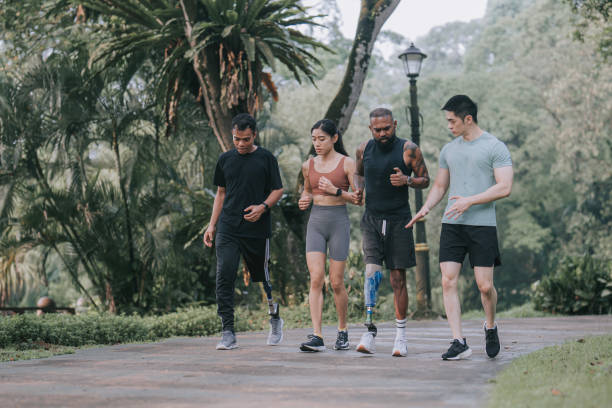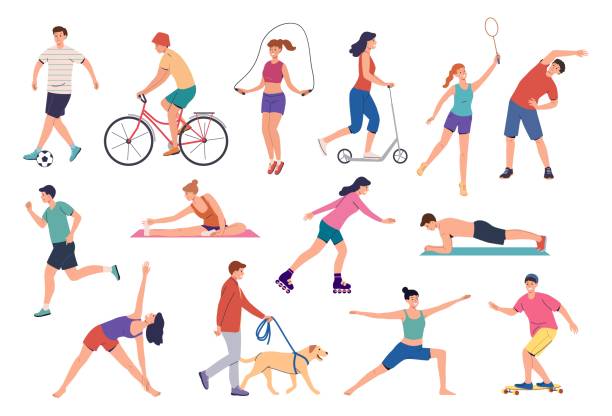Why Exercise Matters for Blood Sugar Control
Exercise is one of the most powerful tools for managing blood sugar. Whether you’re living with type 2 diabetes, have prediabetes, or simply want to stay healthy, regular physical activity can make a big difference. It helps your body use insulin better, lowers blood sugar levels, and boosts your overall health.
In this post, we’ll break down how exercise supports blood sugar control, highlight the best types of workouts for your goals, and offer simple tips to help you get started safely.
How Exercise Affects Blood Sugar
When you move your body, your muscles use glucose (sugar) for fuel. This helps bring down the amount of sugar in your blood. Over time, regular physical activity also makes your body more sensitive to insulin, which means it can use insulin more effectively to keep blood sugar levels steady.
Key Benefits of Exercise on Blood Sugar:
- Lowers blood sugar during and after workouts
- Improves insulin sensitivity (helps your body use insulin better)
- Supports weight loss and healthy weight management
- Lowers the risk of type 2 diabetes in people with prediabetes
- Boosts mood, energy, and overall well-being
The Centers for Disease Control and Prevention (CDC) says that staying active is one of the best ways to manage diabetes and even prevent it from starting in the first place.

Best Types of Exercise for Blood Sugar Control
Not all exercise works the same way, but each type plays an important role in managing blood sugar. Some help lower it right away, while others improve your health over time. For the best results, aim to combine different types of workouts. This mix helps your body in more ways and supports long-term blood sugar control.
1. Aerobic Exercise (Cardio)
Aerobic exercise, also known as cardio, gets your heart rate up and helps lower blood sugar quickly. It also strengthens your heart, lungs, and improves overall fitness. This type of movement helps your body use insulin better and burn extra glucose for energy.
Examples include:
- Brisk walking
- Jogging or running
- Cycling
- Swimming
- Dancing
Goal: Try to get at least 150 minutes of moderate aerobic activity each week. That’s about 30 minutes a day, 5 days a week. You can break it into shorter sessions if needed—every bit of movement counts!
2. Resistance Training (Strength)
Strength training helps build and maintain muscle. More muscle means your body can burn more glucose, even when you’re not active. This type of exercise also improves insulin sensitivity and supports healthy weight management.
Examples include:
- Lifting weights
- Using resistance bands
- Bodyweight exercises like squats, lunges, and pushups
Goal: Aim to do resistance training at least 2 days a week. Focus on all major muscle groups, and allow rest between sessions to help your muscles recover.
3. Flexibility and Balance Exercises
While these exercises may not directly lower blood sugar, they play an important role in overall health. They help improve movement, reduce stiffness, and prevent injuries. Better flexibility and balance also make it easier to do other types of exercise safely.
Examples include:
- Yoga
- Tai chi
- Stretching routines
Bonus: Yoga and tai chi can also help reduce stress. Lower stress levels may lead to better blood sugar control over time.
How Often Should You Exercise?
Staying consistent is one of the most important parts of managing blood sugar with exercise. Aim to move your body most days of the week. Even small bursts of activity can make a big difference in your health.
Tips for a weekly routine:
- Cardio: 30 minutes a day, 5 days a week
- Strength training: 2–3 times per week
- Stretching/flexibility: Daily or after each workout
Pro tip: Don’t worry if 30 minutes at once feels like too much. Break it into shorter sessions—like three 10-minute walks throughout the day. It all adds up!
When Is the Best Time to Exercise for Blood Sugar?
The best time to exercise can vary from person to person, but research shows that moving your body after meals may be especially helpful. Physical activity after eating can reduce blood sugar spikes and help your body process glucose more effectively.
Try this: Take a 15–30 minute walk after meals. A study published in Diabetologia found that walking after eating may lower blood sugar more than doing one longer workout later in the day.
Exercise Tips for People with Diabetes
If you have diabetes or prediabetes, it’s important to take a few extra steps to stay safe while staying active. The right precautions can help you avoid problems and make your workouts more effective.
Important Tips:
- Check your blood sugar before and after exercise, especially if you take insulin.
- Always keep a fast-acting snack with you in case your blood sugar drops too low (hypoglycemia).
- Drink plenty of water before, during, and after your workout to stay hydrated.
- Wear comfortable, supportive shoes to protect your feet and prevent injury.
- Talk to your doctor before starting a new exercise routine, especially if you’re on medication or have diabetes-related complications.

How Exercise Helps With Insulin Resistance
Insulin resistance occurs when your body doesn’t respond well to insulin, making it harder to control blood sugar levels. Regular exercise helps improve how your cells react to insulin, making it easier to keep blood sugar steady.
Even a single workout can boost insulin sensitivity for up to 48 hours, which is why staying active consistently is so important for managing blood sugar.
The American Diabetes Association recommends including both cardio and resistance training in your exercise routine to effectively fight insulin resistance and improve overall health.
Exercise and Weight Loss for Blood Sugar Control
Carrying extra weight, especially around your belly, can make it harder for your body to manage blood sugar levels. Regular exercise helps burn calories, reduce fat, and build lean muscle, all of which improve blood sugar control.
Even losing a small amount of weight—about 5–7% of your total body weight—can make a significant impact on your blood sugar levels.
Example: If you weigh 200 pounds, losing just 10–14 pounds can help lower your blood sugar and reduce the risk of diabetes-related complications.
Easy Ways to Add Movement to Your Day
You don’t need a gym membership to stay active. Small changes throughout your day can add up and help you stay on track with your health goals. Every bit of movement counts!
Try these simple ideas:
- Park farther from the store entrance to get in some extra steps.
- Take the stairs instead of the elevator to strengthen your legs and improve endurance.
- Walk around while talking on the phone, turning idle time into active time.
- Use TV commercials as a chance to stretch or do a quick workout.
- Try bodyweight exercises like squats or pushups at home to build strength without equipment.
Common Myths About Exercise and Blood Sugar
Let’s clear up a few myths:
Myth 1: You have to work out hard to see results.
Truth: Even light to moderate activity helps lower blood sugar.
Myth 2: If you’re thin, you don’t need to exercise.
Truth: Blood sugar issues can affect anyone, even at a healthy weight.
Myth 3: You can’t exercise if you have complications.
Truth: You can stay active with guidance. Talk to your doctor about safe options.
Signs Your Blood Sugar Is Dropping Too Low
If you take insulin or certain diabetes medications, be aware of low blood sugar symptoms.
Watch for:
- Dizziness
- Shaking
- Sweating
- Weakness
- Confusion
What to do: Eat a fast-acting sugar like fruit juice or glucose tablets. Wait 15 minutes, then recheck your levels.
Tracking Your Progress
Keeping track of your progress is an important part of staying on top of your health. Use a journal or an app to record:
- Your workouts and exercise routines
- Blood sugar readings before and after activity
- How you feel during and after exercise
Tracking these details helps you understand what works best for you, allows you to adjust your routine as needed, and keeps you motivated to reach your goals.

When to Talk to a Doctor
You should check in with your doctor before starting a new exercise plan if:
- You take insulin or other blood sugar meds
- You’ve had low blood sugar episodes
- You have heart disease or other health issues
A healthcare provider can help you create a safe, effective plan.
Final Thoughts
Exercise is a powerful and natural way to manage blood sugar levels. Whether it’s a brisk walk, bodyweight squats, or any other form of movement, every little bit helps. Remember, you don’t have to be perfect—you just need to stay consistent and keep moving forward.
Start at your own pace, set small and achievable goals, and celebrate each step you take toward better health. Progress, no matter how small, adds up over time and can make a big difference in your blood sugar control.
Ready to Take Control?
Why wait? Start today with just a 10-minute walk or some simple stretches. Every bit of movement helps, and your body—and blood sugar—will thank you for it.
Do you have any questions, tips, or a success story to share? Drop a comment below! Let’s support each other as we work toward better health and blood sugar control, one step at a time.

